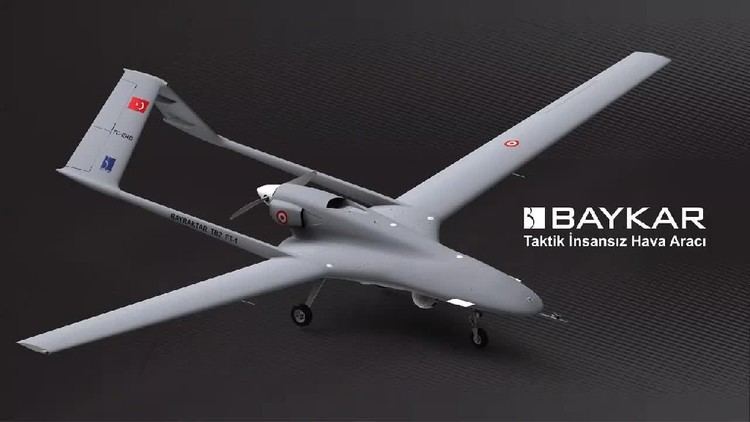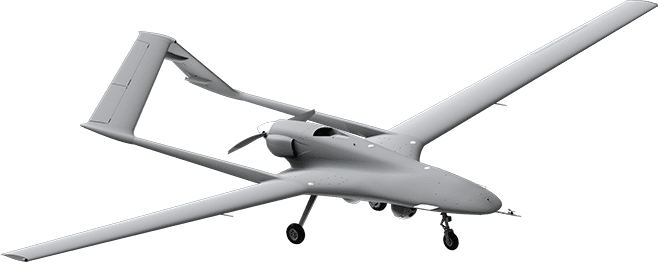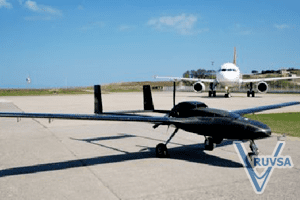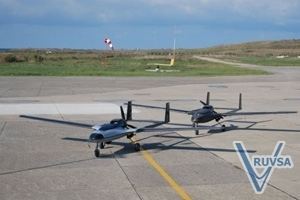Introduced 2009 First flight 2009 | Manufacturer Kale-Baykar | |
 | ||
Bayraktar tactical uas
The Bayraktar Tactical UAS is a surveillance and reconnaissance system initially developed for the Turkish Armed Forces. Bayraktar currently holds the national endurance and altitude record for Turkish aviation. Bayraktar set a record for autonomous flight endurance when it flew 24 hours and 34 minutes at 18,000 feet on 5 August 2014. Bayraktar furthermore holds the altitude record with 27,030 feet on its flight on 14 June 2014 with full payload weight.
Contents
- Bayraktar tactical uas
- System Configuration
- Digital Flight Control System
- Design
- Bayraktar TB2 UCAV
- Milestones
- General Characteristics
- Performance
- Operators
- References

Bayraktar TB2 successfully demonstrated firing of Roketsan MAM-L Smart Munition with 100% precision in December 2015.
Bayraktar is developed by the Kale-Baykar joint venture between the Kale Group and Baykar Technologies. In 2007, the Turkish Defense Undersecretariat (SSM) initiated a development program and invited two companies to compete for a prototype demonstration phase of Tactical UAS Program. Bayraktar demonstrated Block A, with its dual redundant avionics system in 2009 with a fully autonomous takeoff and landing capability and was selected as the winner of the program. Bayraktar Block B design commenced in early 2012 with the second phase of the program, which covers development and serial production.

While the Turkish Armed Forces describes Bayraktar as "Tactical UAV Class" so as to prevent it from being a competitor to the TAI Anka UAV, international standards would classify it as a Medium Altitude and Long Endurance (MALE) UAV Class. With its 650 kg MTOW and 12 meters wingspan platform powered by an internal combustion engine, Bayraktar can fly up to 22,500 feet and loiter for more than 24 hours.

System Configuration

Each Tactical UAS is configured with six aerial vehicle platforms, two Ground Control Stations (GCS), three Ground Data Terminals (GDT), two Remote Video Terminals (RVT) and Ground Support Equipment. Each Aerial Platform is equipped with a triply redundant avionics system. Its ground control system's cross redundant architecture allows for pilot, payload operator and mission commander to command, control and monitor the platform.
Digital Flight Control System

Bayraktar has a triple-redundant flight control system with autonomous taxi, takeoff, cruise, landing and parking capability without any external sensor aid. The flight control system is the central main component which conducts sensor fusion algorithms running with the real-time sensor data. Mission specific controls such are handled through the mission control computer system. Aerial platform is guided through various redundant rotary and linear type servo actuators which are designed according to the dynamics of the aerial platform. All of the main airborne avionics equipment software and hardware are developed under the running program so as to achieve utmost performance. Electronic power unit powers the onboard systems supported with triple alternators and smartly balanced lithium ion battery units. A ruggedized heated type camera unit is placed at the tail section of the platform to monitor flight and all payload and telemetry data are recorded to the airborne data recorder. Redundancy architecture of the avionics support for autonomous emergency landings on different airfields if necessary. Sensor fusion algorithms allow for navigation and auto landing even in loss global positioning signals.
Design

Bayraktar Block B Platform has a blended wing body design with its inverse V-Tail structure. Blended wing body design supports the lifting performance of the overall platform. Thrust is generated through the internal combustion engine placed between the tail booms. Monocoque platform is modular with detachable main items such as wing, tail boom, and V-Tails. All of the fuselage items are mostly made of carbon fiber composite parts whereas precision CNC machined aluminum parts are used at the junction sections of the platform. Fuel is stored within bladder tanks and fuel consumption is automatically balanced with solenoid valves. Variable pitch two blade propeller allows for medium altitude efficient flying.
Ground Control Station is based on a NATO spec shelter unit which is equipped with cross redundant command and control systems. The mobile unit supports for three personnel pilot, payload operator and mission commander. GCS is equipped with redundant Air Conditioners and NBC filtering unit. All hardware inside the shelter is placed inside racked cabinets. Each operator has dual screens in front along with the Operator Interface Software used for real-time command, control and monitoring.
Bayraktar TB2 UCAV
In June and August 2014 test flights, Bayraktar TB2 reached 27,000 feet altitude and stayed in air for 24 hours and 34 minutes. Bayraktar TB2 has wing span of 12 meters and max takeoff weight of 650 kg.
On 17 December 2015, missile system of Bayraktar TB2 UCAV was successfully tested. In the tests, long-range anti-tank missile UMTAS (diameter: 160 mm; target range: min 500 m, max 8 km) developed by Roketsan was used. Two UMTAS missiles (with each one 37.5 kg) were mounted to the both wings of Bayraktar TB2 UCAV. The 2x2m target panel was (with 100% accuracy and precision) hit from 8 km away and 16000 feet (about 5000m) altitude with laser guided UMTAS missile by the operator pilot in ground station. Thus, Turkey became the 6th country in the world that produces UCAV (USA: Predator, Reaper; China: CH-3 with short-range AR-1 missile; Israel: Hermes; Iran: Shahed 129 with Sadid-1 missile, Pakistan Burraq Ucav with Burq Missile). On 18 December 2015, a video was published for the missile test of Bayraktar TB2. On 8 September 2016 the Baraktar TB2 recorded its first kill, during an operation against the PKK.
